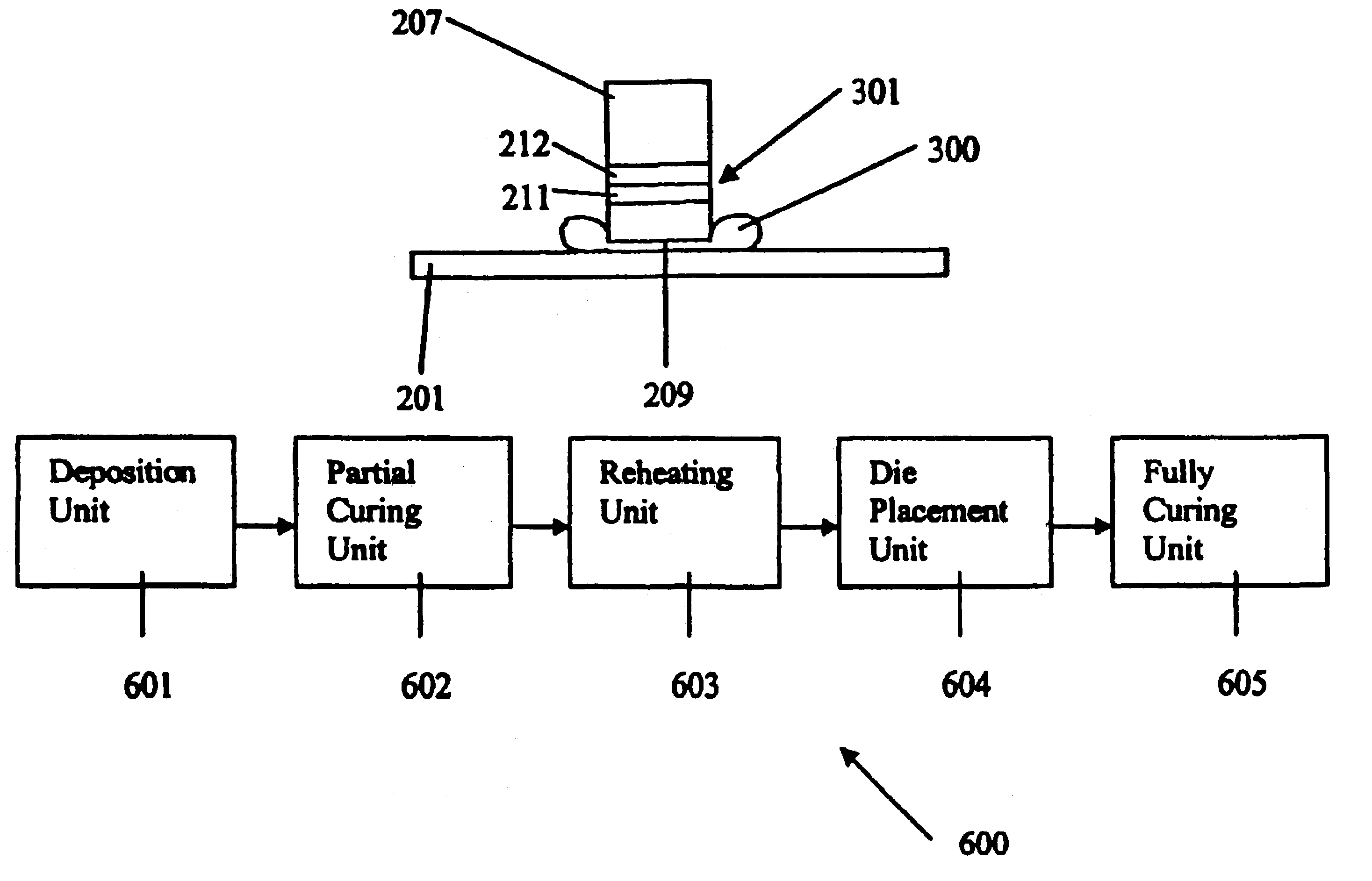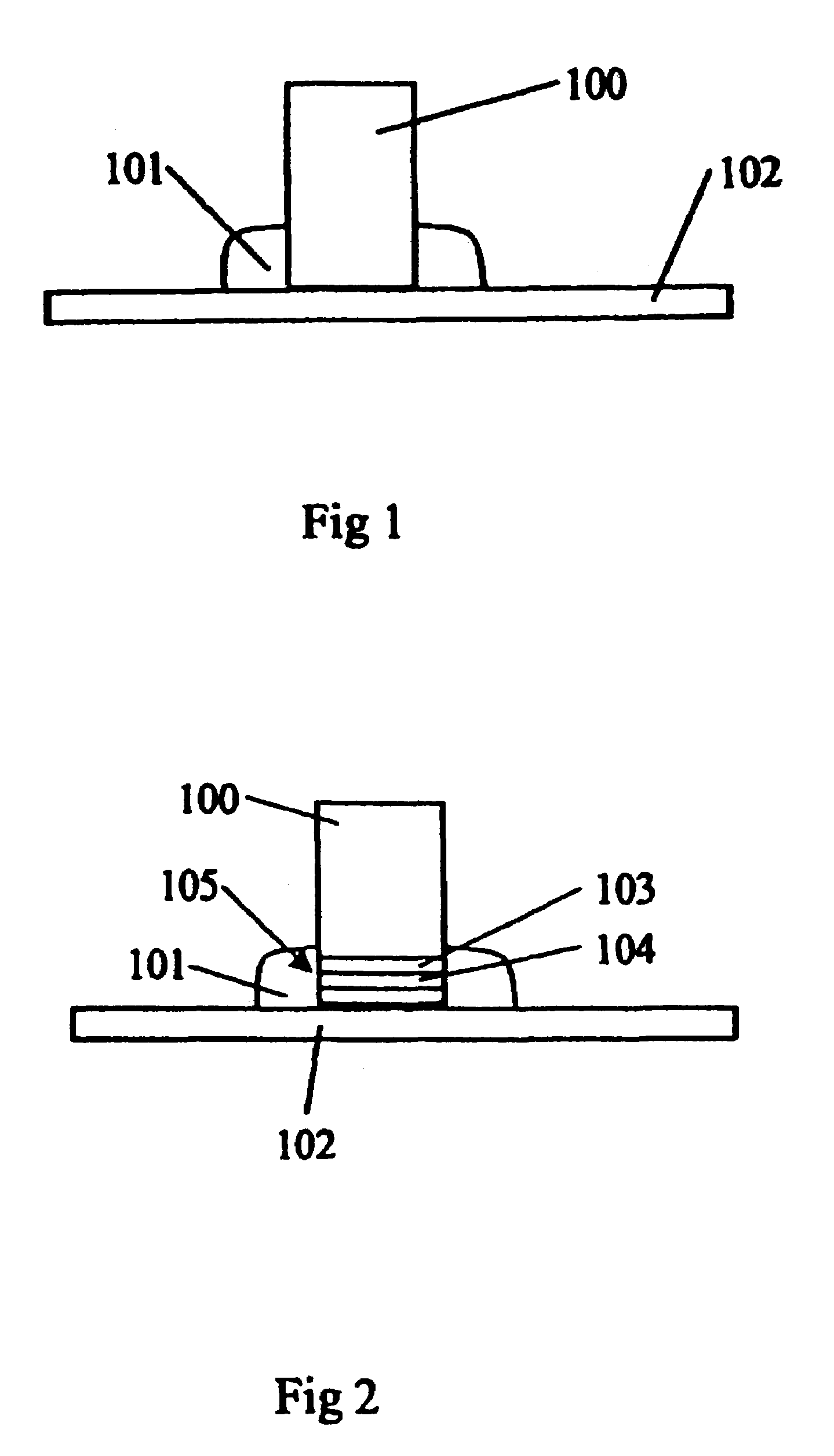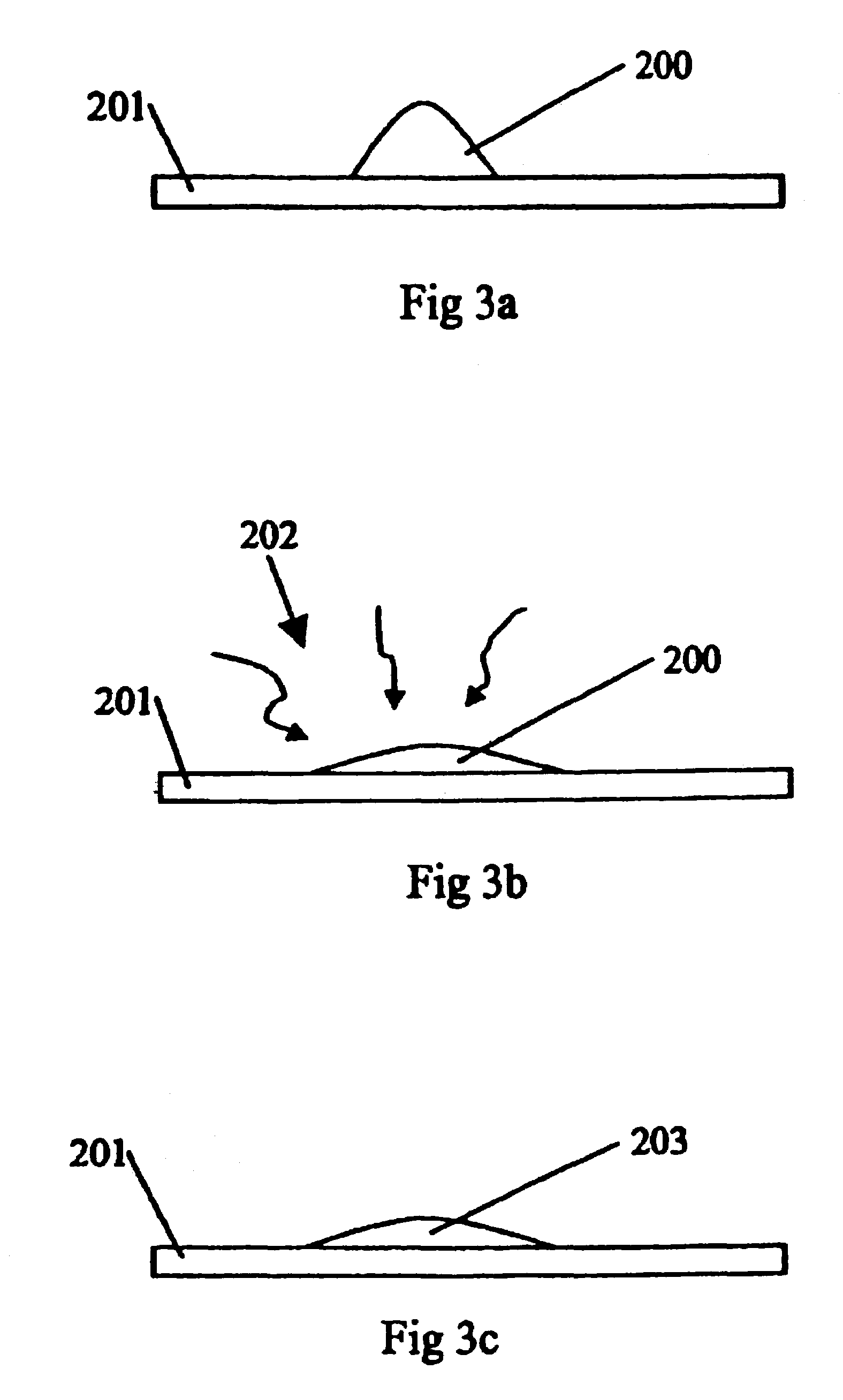Adhesive die attachment method for a semiconductor die and arrangement for carrying out the method
a technology of adhesive die and semiconductor die, which is applied in the direction of semiconductor devices, electrical equipment, basic electric elements, etc., can solve the problem that partial curing cannot be avoided, and achieve the effects of good mechanical bonding of the die to the substrate, reliable electrical connection, and easy control
- Summary
- Abstract
- Description
- Claims
- Application Information
AI Technical Summary
Benefits of technology
Problems solved by technology
Method used
Image
Examples
Embodiment Construction
[0040]Preferred embodiments of the adhesive attaching method for attaching a semiconductor die to a substrate according to the invention is shown in, and described in the following with reference to FIG. 3a to FIG. 3h.
[0041]A drop of adhesive 200 is deposited onto a substrate 201 such as a leadframe, a ceramic, glass or flexible circuit board, or a plastic or printed circuit board (PCB), using a dotting, stamping or dispensing process as shown in FIG. 3a. The adhesive may also be deposited on the substrate 201 using a silk-screening, stencilling or ink-jet process.
[0042]According to the preferred embodiment of the invention, the adhesive 200 is formulated from epoxy thermoset resins, thermoplastic resins or silicone. The epoxy is either a one-component or a two-component epoxy formulation consisting of resin as the first component and a catalyst hardener as the second component. The epoxy is also mixed with a metallic filler material to enable the adhesive to be electrically conduc...
PUM
 Login to View More
Login to View More Abstract
Description
Claims
Application Information
 Login to View More
Login to View More - R&D
- Intellectual Property
- Life Sciences
- Materials
- Tech Scout
- Unparalleled Data Quality
- Higher Quality Content
- 60% Fewer Hallucinations
Browse by: Latest US Patents, China's latest patents, Technical Efficacy Thesaurus, Application Domain, Technology Topic, Popular Technical Reports.
© 2025 PatSnap. All rights reserved.Legal|Privacy policy|Modern Slavery Act Transparency Statement|Sitemap|About US| Contact US: help@patsnap.com



